How to Make a Poetry Zine

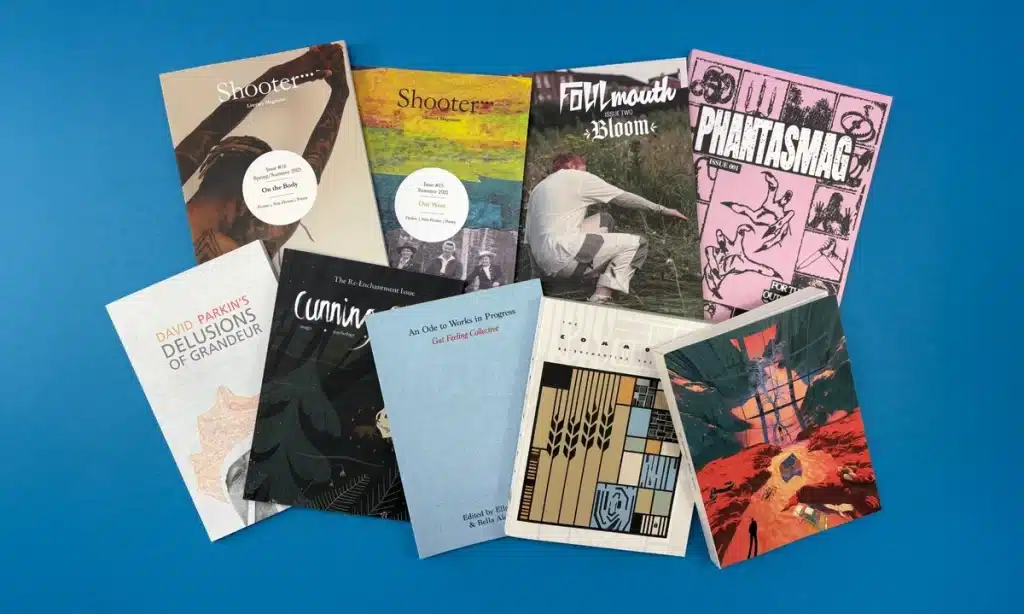
Are you feeling overwhelmed by the idea of creating a poetry zine? It's okay to feel intimidated by the terms "poetry" and "zine." Many beginners find the process of making their first zine challenging. But fear not; this guide is here to help break down the process into manageable steps so you can enjoy the journey.
What is A Poetry Zine?
A poetry zine can be defined as a self-published booklet that contains your original poetry. It's an excellent way to share your words, your world, and your viewpoint with others. Think of it as the mini version of a poetry book—raw, edgy, and inside; it's a collection of poems you have penned down, folded neatly between two pages of paper.
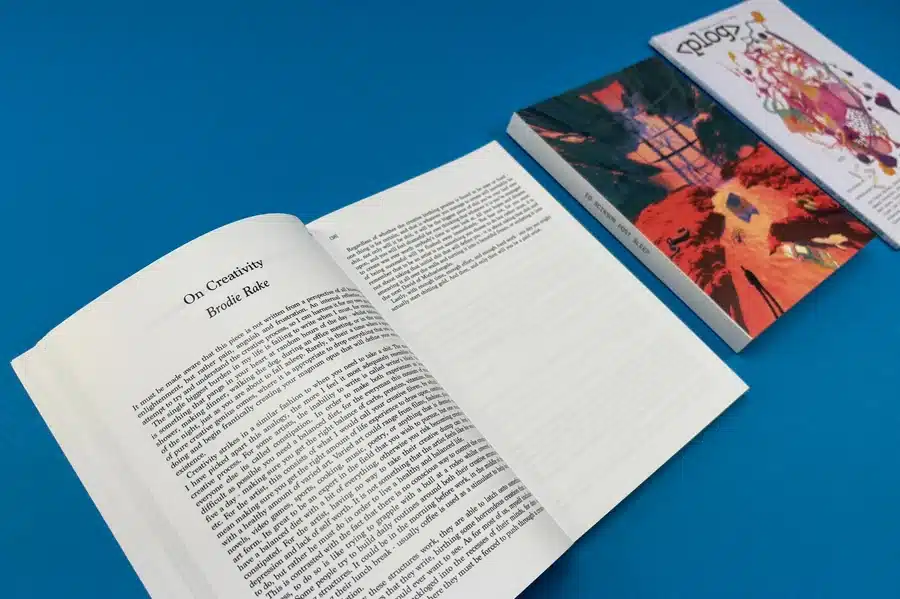
Necessary Items for Making a Poetry Zine
- Poems and Content: Creating a poetry zine requires combining creativity and practical materials. The core of the zine is a collection of original poems that reflect your unique voice and themes. You may also include illustrations, photos, or artwork to complement your poetry visually and enhance the reader's experience visually.
- Writing and Editing Tools: A notebook or a digital document is essential for drafting and refining your poems. Pens, pencils, or markers can be helpful for brainstorming or handwritten additions, while word processing software provides a polished final edit before publication.
- Paper and Printing Materials: For paper and printing materials, choose printer-friendly paper, whether standard letter-size or speciality papers, that add aesthetic value. Ensure you can access a reliable printer, or consider using a professional printing service for larger quantities.
- Binding Supplies: Binding supplies play a significant role in the zine's presentation. A stapler, preferably a long-arm model, helps with binding larger zines efficiently. For a handmade touch, thread and needlework work well for hand-stitched bindings, while glue or tape can also be used creatively to bind pages together.
- Layout and Design Tools: Layout and design tools such as scissors or a craft knife will be necessary for cutting paper to the desired size. Using a ruler and cutting mat ensures precise measurements and neat edges. Design software like Canva, Adobe InDesign, or free options like GIMP can assist with layout and formatting.
- Distribution and Packaging: For distribution and packaging, envelopes help mail your zine to readers or contributors. Labels and stickers can help with branding and personalising the packaging. Sharing a digital version through PDF or ePub format can widen your audience reach.
- Inspiration and References: Exploring existing zines can provide design ideas and creative approaches. Books or articles about zine culture and self-publishing offer further guidance and motivation. With these items, you can craft a personalised and visually engaging poetry zine ready for sharing with the world.
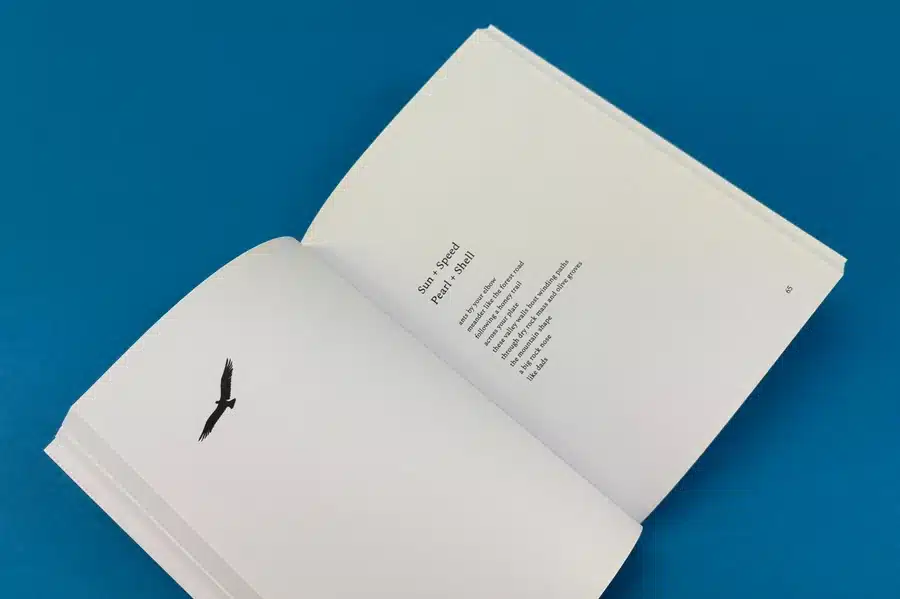
Turn Your Poems Into Art: 10 Steps to a Memorable Zine
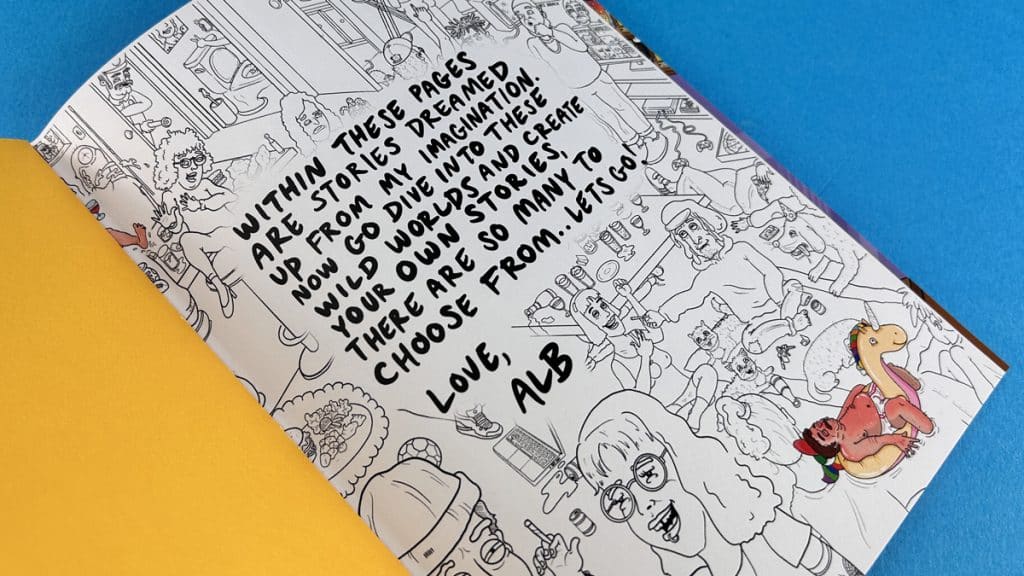
Now that you're familiar with a poetry zine, let's delve deeper into how to craft a concept for your zine. Remember, there's no definitive one-size-fits-all when creating your zine. The beauty of a zine lies in its uniqueness. So, don’t just attempt to mimic existing work; unleash your creativity and weave a story that defines you.
Step 1 - Brainstorming Techniques
Creating a poetry zine involves battling the storm in your mind. Brainstorming techniques like Stream of Consciousness, Mind Mapping, and Word Clouds can generate ideas. Stream of Consciousness lets ideas flow freely without judgment. Mind Mapping involves visualising related concepts around a central theme. Word Clouds visually map out potential topics by adding related words to a central theme word.
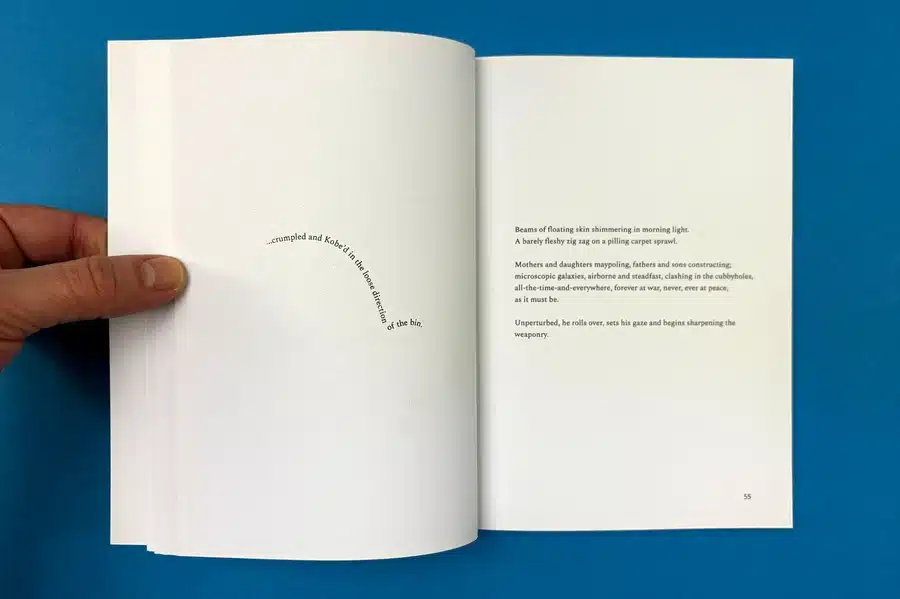
Step 2 - Finding Inspiration
Ideas multiply like rabbits. Immerse yourself in zines to spark inspiration. Explore platforms for layout ideas. Life experiences, values, and beliefs can inspire you in this vast internet culture. From conversations to travel diaries, poetry is everywhere—you just need to find it in the mundane.
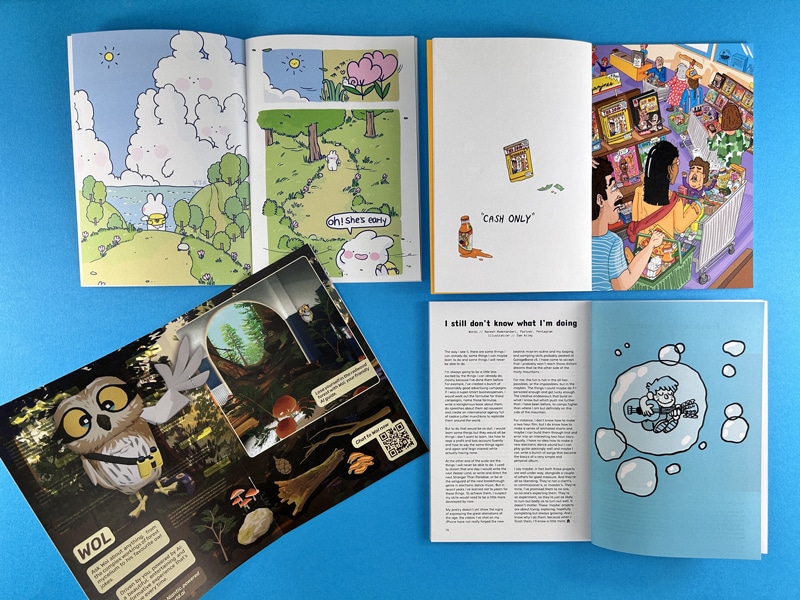
Now that you have a reservoir of ideas, it's time for the next exciting phase - designing your poetry zine. The design process involves two primary elements: visual layout and typography. Each element carries its weight and is crucial in how the final zine appears. After all, the cover of your zine is your first chance to lure the readers into the world of words enclosed within.
Step 3 - Layout and visual appeal
The layout of your zine sets the tone for your poetry, guiding the reader through your thoughts and feelings. Visual elements can enhance specific pieces and create a sensory experience. Colors and textures can echo moods, while images and patterns, including collages, add depth to each page, forming unique narratives. Use brainstorming techniques to gather visual content, bringing your mood board to life within your zines.
Step 4 - Choosing the perfect typography
While the visuals catch your reader's eye, the choice of typography guides them through the pages. A careful selection of fonts not only defines the aesthetic of your zine but also enhances the readability. Choosing the right typeface strengthens the emotion of the words, lending weight to your voice. Variable fonts are great for adding dynamism across the pages of your zine, each waiting to be flipped over to reveal a new page full of surprises. However, remember that legibility should always be prioritised over decorative forms.
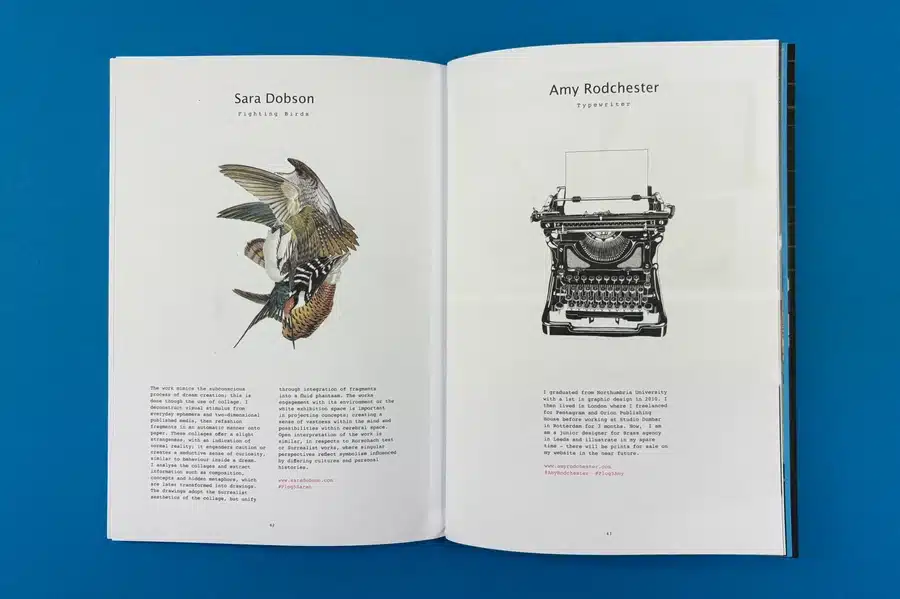
Once the layout and typography of your poetry zine are decided, it's time to select the special verses that you want to share with the world. The process involves picking up your best poems and determining their order in the zine to ensure a harmonious flow.
Step 5 - Selecting the best poems for your zine
Selecting poems for your zine calls for intuition and thought. Pick poems that align with your zine's theme and illustrations. Include poems like haikus, sonnets, and free verse to showcase your literary style. Aim for a diverse yet cohesive collection where each poem amplifies your zine's voice. Let every page reflect your poetic essence!
Step 6 - Arranging poems in a thematic flow
Every zine is a journey guided by you, the arranger. Organising poems thematically adds depth, creating an immersive experience for readers. Arrange poems sequentially to tell a story or based on contrasts/similarities. Each poem should complement the next for a seamless flow of emotions and thoughts on your zine's pages.
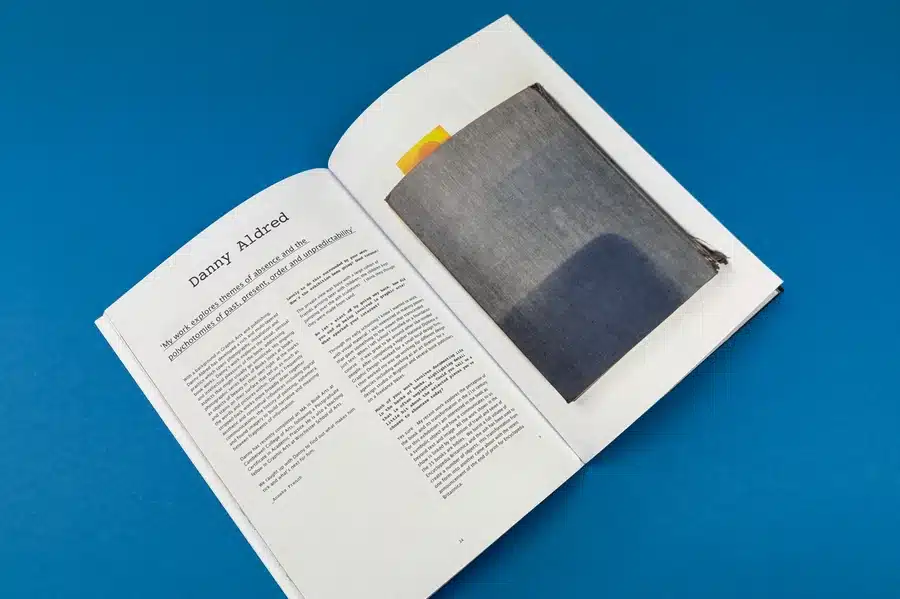
Now that the design and organisation are set, it's time to bring your zine to life. This phase involves decisions on printing, folding, and binding techniques, particularly regarding the content of your zine. It's crucial as it turns your selected words into a tangible piece of art - the poetry zine.
Step 7 - DIY printing options
When printing your poetry zine, consider these options: Home Printer: Convenient but limited to A4 size. Costs can increase based on ink and paper type. Photocopier: Ideal for bulk quantities, cost-effective per copy, but requires manual assembly. Online Printers: Offers various sizes, paper types, and binding choices. More expensive for small quantities. Choose a printing option that suits your budget, output needs, and convenience.
Step 8 - Binding and folding methods
After printing, binding your zine is an exciting task that affects its feel and appearance. Contrary to common belief, binding shouldn't be complex or professional-looking. The most common and affordable method is saddle stitching or stapling along the crease of the fold. For a fancier option, consider Japanese or Coptic stitching, which may require extra tools and skills. A regular 'half-fold' style is the simplest and most popular choice for folding.
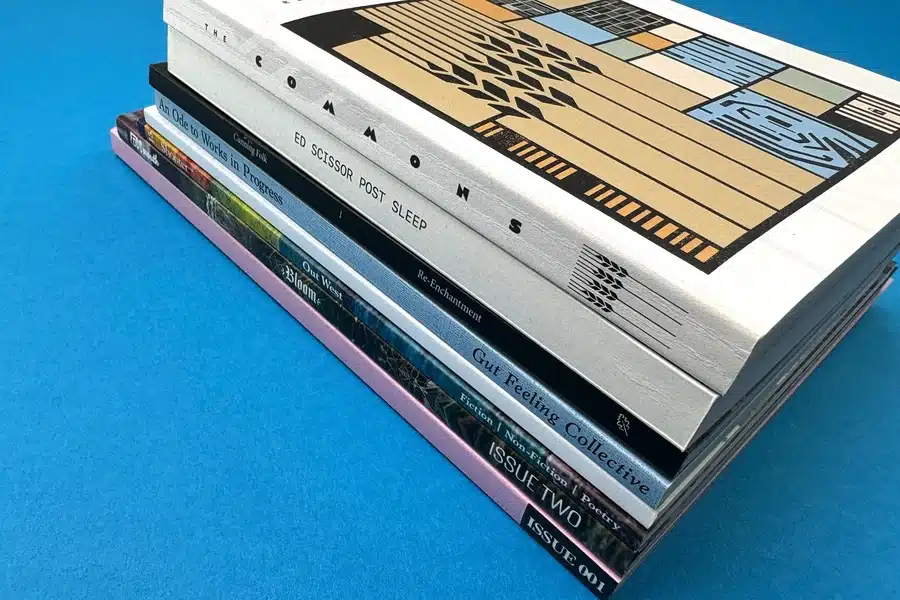
Step 9 - Social media platforms
Social media platforms are essential for promoting creative work. Key platforms for promoting your poetry zine include Instagram, where you can showcase your zine visually; Facebook for discussions, live readings, and workshops; and Twitter for engaging with literary conversations and sharing excerpts. Use relevant hashtags to boost visibility and engage with your audience to cultivate avid readers.
Step 10 - Collaborating with local bookstores and events
Offline promotion is crucial for promoting your poetry zine. Partnering with local bookstores and participating in literature events can help you reach a wider audience interested in literature. Engage with like-minded individuals, receive feedback, and be part of a supportive literary community.
Ready to make your poetry zine stand out? Partner with Ex Why Zed today and bring your creative vision to life!
Self Publishing
If you are seriously dedicated to proliferating your zines, self-publishing platforms are a brilliant avenue. With multiple print-on-demand services available now, self-publishing your zine can help you reach a global audience without investing exorbitantly upfront. From selecting the paper quality and typeface to deciding the selling price, you have complete control over how your zine is presented and sold.
Unleash Your Creativity with Ex Why Zed's Indie Poetry Zine Printing Services
Ex Why Zed empowers poets and creators through beautifully printed indie poetry zines. We offer expert guidance from design to print, ensuring each project reflects the creator's vision. With diverse printing options and collaborations with platforms like Popshot, we cater to new and established artists. Explore our services and kickstart your self-publishing journey today. Contact us at hello@exwhyzed.com or call +44 1206 766647 for inquiries or to order your paper sample pack.
Conclusion
Creating a poetry zine is not just about compiling poems; it is a creative endeavour that allows you to express your deepest emotions and thoughts. Crafting a poetry zine involves much more than just writing - from conceptualising themes to designing layouts, each step offers a unique learning experience and a sense of fulfilment. By embarking on this journey, you can establish a profound connection with your readers as you share your inner poet. Embrace your creativity, let your imagination run wild, and begin the exciting process of creating your very first poetry zine today!
Enjoy Case Studies of How We Made Some Recent Poetry Zines
If the Forest Could Speak, It Would Look Like This
Charlotte Bellamy’s If The Woods Whispered is a poetic-photographic symphony, where design, print, and emotion converge. With 150gsm uncoated pages echoing the natural world and a silk-laminated cover that softens the visuals, this 180-page piece showcases how material choices can deepen narrative tone. The collaboration nailed every detail—right down to spine width. Designers take note: let content breathe, proof meticulously, and always match your materials to the mood. This project is a blueprint in turning artful intent into a tactile, emotionally resonant book. Read the full story.
A Love Letter to the Unfinished
An Ode to Works in Progress celebrates imperfection with clarity and care. Gut Feeling Collective’s debut poetry book combines a monochrome aesthetic with silk-stock tactility and a bold, minimalist cover. Every element—from justified inner text to a precisely aligned spine—serves the evolving narrative. When last-minute tweaks came in, Ex Why Zed adapted with ease, ensuring the book stayed true to its message. For self-publishers: simplicity isn’t basic—it’s bold. Spine cohesion, tactile finish, and design restraint are your allies. Discover the full case study.
Small Format, Big Impact
Buoy Press’s Poetry Will Have To Do proves that compact design can carry emotional weight. At just 180x100mm, this collection feels intimate—like a secret passed between hands. Printed entirely in black on 100gsm Evolution Uncoated, with a tactile 300gsm cover, the book pairs eco-conscious material with thoughtful layout. Perfect binding enhances durability, while carefully chosen typography lets the words breathe. The seamless reprint process highlights how strong client-printer rapport leads to flawless execution. For indie poets: size can be a statement, and uncoated stocks deliver unmatched warmth. Explore the full Buoy Press journey.
How to Self-Publish a Poetry Book—The Smart Way
This guide distills everything a modern poet needs to self-publish with impact—from shaping your manuscript to designing a standout cover and choosing the right format. It dives deep into practicalities like editing costs, ISBNs, and print options (POD vs. offset), while delivering pro-level insights: use uncoated paper for warmth, don’t cram poems onto pages, and treat your layout like a stage for each piece. Ideal for first-timers and seasoned poets alike, it’s a blueprint for building a book that looks and feels as powerful as your words.
Your No-Fuss Guide to Poetry in Print
Forget the gatekeepers—this hands-on guide empowers you to turn raw poems into a bound poetry zine that’s bursting with personality. From idea-storming and mood boards to layout finesse and bold binding choices, it shows how to shape your style into something tangible. Top takeaways? Keep typography readable but expressive, give poems room to breathe, and match your binding to your vibe. Whether you're printing a one-off zine for a poetry night or scaling up with POD, this is creative freedom at its finest.
Frequently Asked Questions
How do I make a digital poetry zine?
Creating a digital poetry zine follows the same process as creating a paper zine, except the output is digital. You design, arrange, and edit your zine using software like Microsoft Word or Adobe InDesign, and then you share the finished digital file online.
Can I sell my poetry zines?
Absolutely! Many poets sell their zines either online or at local events and bookstores. Remember to factor in printing and delivery costs when deciding on a selling price.
What are some resources for finding inspiration?
Inspiration can be found everywhere—books, music, nature, conversations, personal experiences and emotions. You can also explore existing zines on social media platforms like Instagram or online communities.


